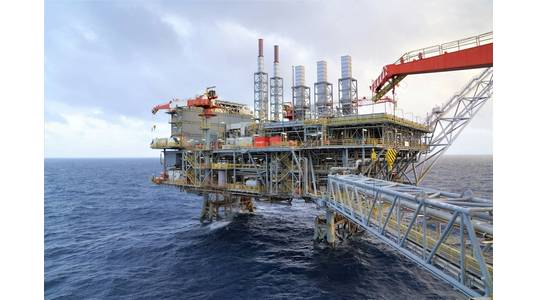
Harbour Energy narrowed its annual production forecast range on Thursday, pulled down by a halt in sub-sea and platform drilling and a delay in some Beryl oilfield production wells coming online.
Shares in Britain's largest North Sea oil and gas producer fell by more than 2% in morning trade, as the company also swung to a first-half loss after tax of $8 million due to hefty tax bills.
After Britain imposed a windfall tax on oil and gas producers last year in the wake of a surge in energy prices, Harbour has sought to scale back North Sea spending and diversify its operations overseas.
The company now expects production between 185 kboepd (thousand barrels of oil equivalent per day) and 195 kboepd for 2023, compared with an earlier forecast of 185-200 kboepd.
For the six months ended June 30, profit before tax fell to $400 million from $1.5 billion last year.
Harbour Energy began trading publicly in April 2021, after Premier Oil struck a deal with Chrysaor to bolster its North Sea resources, amid struggles with heavy debt following the oil price crash of 2017 and tepid profits during COVID-19 lockdowns.
Since the merger, the company, which supplies about 15% of Britain's domestic oil and gas, has cut its debt by about $2.9 billion.
Harbour said on Thursday it expects to be net debt free in the first half of 2024 and close the current year with a net debt of about $200 million, due to tax bills and higher capital expenditures in the second half of the year.
However, it slightly lowered total capital expenditure expectations for the year to $1 billion from $1.1 billion.
"This reduction is driven by some capex now falling in 2024 due to the delayed arrival of rigs, primarily at Andaman and the Greater Britannia Area, as well as the deferral of the subsea and platform drilling campaigns at Beryl," the company said in a statement.
(Reuters - Reporting by Eva Mathews; Editing by Sherry Jacob-Phillips and Emelia Sithole-Matarise)